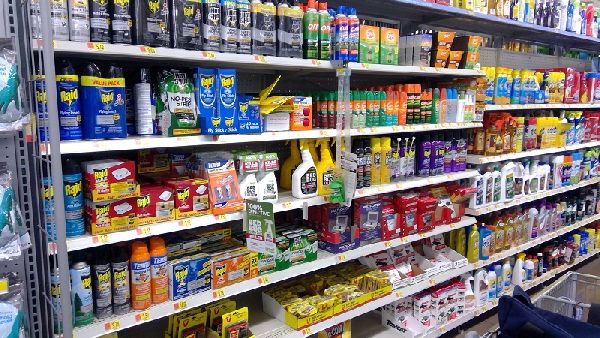Pesticides at Home
From weed and feed for lawns to insect sprays - even bathroom and kitchen sanitizers - many everyday household products contain pesticides. In fact, homeowners use more pesticides per acre than most agricultural areas and are less likely to follow safety precautions required by the pesticide label.
If not handled and used carefully, these chemicals can cause serious problems, such as contaminating water supplies, or even harm people or pets.
Follow these tips to make sure you use pesticides safely.
Use Pesticides Only When Necessary
- Prevent weeds and pests before they become a problem.
- In your yard, select plants that are resistant to insects and diseases.
- Follow recommended watering and maintenance practices to keep lawns and landscapes healthy – this will help prevent pests from getting a foothold.
- Exclude pests from structures by sealing cracks and crevices.
- Remove sources of food, water, and cover for pests. Seal up food containers and sanitize surfaces.
- Decide if controlling the pest is really necessary. Will it cause unacceptable damage if not controlled?
- Use alternative methods of removing pests, such as hoeing and hand pulling weeds, removing insects with a jet of water, or non-chemical rodent traps.
Select the Right Product
- Identify the type of weed, insect, or other pest that is causing the problem. Your local Cooperative Extension Service can assist you in identification of pests and plant diseases and can recommend treatments.
- Read pesticide labels to select the most effective product for the job. Use only products that are labeled for your specific problem, including the type of pest you wish to control and the site you wish to use the pesticide on.
- Buy only the amount of pesticide you need for the current problem.
Read and Follow the Label: It's the law
- The label contains important safety information. Read the entire label carefully before opening the pesticide container.
- The pesticide label is a legal document. The law requires all users to comply with label instructions.
Apply Pesticides Safely: Use the recommended amount. More is not better!
- Wear all protective clothing and equipment listed on the label. That information is there for a reason – to protect you!
- Use only the amount directed. Measure carefully – homeowners frequently over-apply pesticides.
- Use only under the conditions specified on the label, including location, timing, weather conditions, etc.
- Apply pesticides as spot-treatments rather than applying them over a large area.
- Avoid over-spray or ‘drift’. Make sure the pesticide ends up only where it is needed.
- Clean up any spills immediately. Do not hose a spill down with water. Instead, soak up the spill (kitty litter works well) and dispose of properly.
- Never eat, drink, or smoke while using pesticides. The chemical can easily be transferred from hands to mouth and could cause poisoning.
Properly Store & Dispose of Pesticides
- Store pesticides and chemicals in a secure place where children and pets will not be able to reach them.
- Store pesticides in their original, labeled containers.
- Share remaining pesticides with someone who can use them.
- Do not dump leftover pesticides down the drain! Take leftover pesticides to a local, household hazardous waste collection site.
Resources
- Bed Bugs
- Safe and Effective Sanitizers
- National Pesticide Information Center (NPIC)
- A Citizen's Guide to Pest Control and Pesticide Safety (EPA)
- Homeowner Pesticide Information (Clemson University)
- Read and Understand a Pesticide Label (EPA)
- Integrated Pest Management (IPM) - More Effective Pest Control
- Mosquito Control (EPA)
- UAF Cooperative Extension Service (pest identification, pesticide recommendations)


 Indicates an external site.
Indicates an external site.